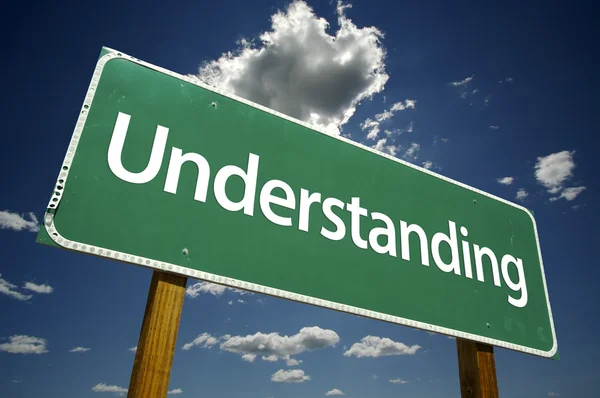
Canyon de Chelly: Where the Land Itself is a Living Map of Indigenous History
Forget the static lines and shaded polygons of a typical map. To truly grasp the complex, layered narratives embedded within Native American land history, one must step onto ground that has been continuously inhabited for millennia, where ancient stories are not just etched into rock but whispered on the wind and lived by its people today. There is no better place to undertake this profound journey than Canyon de Chelly National Monument in northeastern Arizona. This isn’t just a travel destination; it’s an immersive textbook, a three-dimensional, living map that challenges conventional understandings of territory, ownership, and time.
Canyon de Chelly is unlike any other national park unit in the United States. Jointly managed by the National Park Service and the Navajo Nation, it lies entirely within the Navajo Nation’s boundaries, and its canyon floor is home to a thriving, contemporary Navajo community. This unique co-management is the first clue that you are entering a space where the indigenous narrative is not merely preserved but actively lived. The landscape itself is breathtaking: sheer, red sandstone cliffs, some towering over 1,000 feet, carve a dendritic pattern through the high desert plateau. Below, the canyon floor is a ribbon of green, watered by seasonal streams, dotted with cottonwoods, traditional hogans, and irrigated fields. But it’s not just the visual grandeur that captivates; it’s the palpable sense of deep time and continuous human presence.
This sense of continuous occupation is what makes Canyon de Chelly an unparalleled site for understanding Native American land history maps. Long before the Navajo arrived, the canyon was home to the Ancestral Puebloans (often referred to as Anasazi), who built intricate cliff dwellings and farmed the canyon floor from around 350 to 1300 CE. Their presence is evident in the thousands of archaeological sites – petroglyphs, pictographs, and multi-story cliff houses – that pepper the canyon walls. Later, other groups, including the Hopi, utilized the canyon, leaving their own marks. And for centuries, the Diné (Navajo) people have called this canyon home, a sanctuary, a farming ground, and a place of immense spiritual significance.

When you look at a Native American land history map, you often see shifting boundaries, tribal territories, and dates of occupation. At Canyon de Chelly, these abstract concepts become concrete. The very stratification of the canyon walls mirrors the layers of history: the geological strata of sandstone, siltstone, and shale are overlain by the human strata of Ancestral Puebloan, Hopi, and Navajo habitation. Each cliff dwelling, each petroglyph panel, each active farm field on the canyon floor, is a data point on this living map, indicating not just who was here, but how they lived, what they valued, and how their relationship with the land evolved.
The most profound way to engage with this living map is to descend into the canyon itself. While rim drives offer spectacular panoramic views of sites like Spider Rock and Mummy Cave, the true essence of Canyon de Chelly is found on its floor. Crucially, access to the canyon floor is strictly limited and requires a permitted Navajo guide. This is not a bureaucratic hurdle but an essential part of the learning experience. Your guide, often a direct descendant of families who have lived in the canyon for generations, transforms a sightseeing trip into a cultural immersion.
As you navigate the sandy washes and verdant fields with your guide, the "map" comes alive with narrative. They don’t just point out ruins; they tell stories. They explain the function of an Ancestral Puebloan kiva, the meaning of a Navajo Hogan, the significance of a particular rock art panel. They share oral histories passed down through their families, connecting ancient dwelling sites to contemporary life. You might pass a field where corn has been grown for a thousand years, still being tended by a Navajo family today. This direct, continuous connection to the land is something that no two-dimensional map, however detailed, can convey. The guide fills in the human element, the emotional resonance, the spiritual ties that are inextricably linked to indigenous land history. They embody the very continuity that historical maps often struggle to represent, making the past feel incredibly present.
Consider the "Long Walk" – the forced removal of the Navajo people by the U.S. government in 1864, led by Kit Carson. Canyon de Chelly was a stronghold, a place of refuge for many Diné families, its steep walls offering natural defense. The "maps" of this era would show the U.S. military advancing, Navajo territory shrinking, and eventually the reservation boundaries established after their return. But within the canyon, you walk through the very landscape that bore witness to these events. Your guide might point to a specific alcove where their ancestors hid, or describe the resilience required to survive. This personal connection humanizes the cold, hard facts of history, transforming lines on a map into a saga of survival, resistance, and eventual return. It underscores that land is not just a resource or a territory; it is identity, memory, and future.

Moreover, Canyon de Chelly offers a powerful counter-narrative to Western cartography. Traditional maps, often products of colonial expansion, tend to define land in terms of property lines, political borders, and resource extraction. They flatten complex, multi-layered indigenous understandings of place into simplified, often exclusionary, categories. At Canyon de Chelly, you learn that land is not merely owned; it is stewarded, lived in, and imbued with meaning. The boundaries are not just geographical; they are spiritual, cultural, and familial. The Navajo Nation’s co-management of the monument is a living testament to sovereignty and a challenge to the historical erasure often perpetuated by traditional mapping. It asserts that indigenous peoples have a rightful, ongoing claim to their ancestral lands, not just as a historical footnote, but as a vibrant, living reality.
The experience of Canyon de Chelly compels visitors to re-evaluate their understanding of "history" itself. It’s not a bygone era, confined to museums or textbooks. It’s a continuous thread, visible in the ancient dwellings, heard in the stories of the guides, and felt in the very air of the canyon. Standing amidst the ruins of Antelope House or White House Ruin, with a Navajo guide sharing insights into both Ancestral Puebloan and Diné traditions, one gains a profound appreciation for the interconnectedness of cultures and the enduring power of place. The "map" here isn’t static; it’s dynamic, constantly being redrawn and reinterpreted by those who live within its contours.
For the conscientious traveler seeking to understand Native American land history beyond the abstract, Canyon de Chelly is indispensable. It demands a shift in perspective, moving from a passive observer of historical data to an active participant in a living history. It encourages humility, respect, and a willingness to learn directly from indigenous voices. The practicalities of travel—staying in Chinle, booking a Navajo guide well in advance, respecting cultural protocols regarding photography and private residences—become part of the journey of understanding. These aren’t just rules; they are acknowledgments of sovereignty and respect for a living culture that generously shares its history and home.
In conclusion, Canyon de Chelly National Monument is far more than a scenic wonder. It is a vital, breathing testament to the enduring presence and resilience of Native American cultures. It is a place where the concept of "land history maps" transcends lines on paper and becomes an immersive, visceral experience. By stepping into this ancient, yet vibrantly alive, landscape and engaging with its people, travelers can achieve a profound and nuanced understanding of indigenous land history—an understanding that is deeply rooted in the land itself, told through its stories, and continuously lived by its people. It’s a journey not just across space, but through the deep, intertwined layers of human history and the enduring power of place.


